Insanely frustrating.
Part I is here.
I am quickly learning that the only solution for the truly miserable menu design in the E-M5 Mark II is to procure a baseball bat and go in search of the committee which designed this execrable excrescence.
Dial up the Menu system by hitting the Menu button on the back panel and you get this – the overlay pops up after a second instantly obscuring your menu choices.
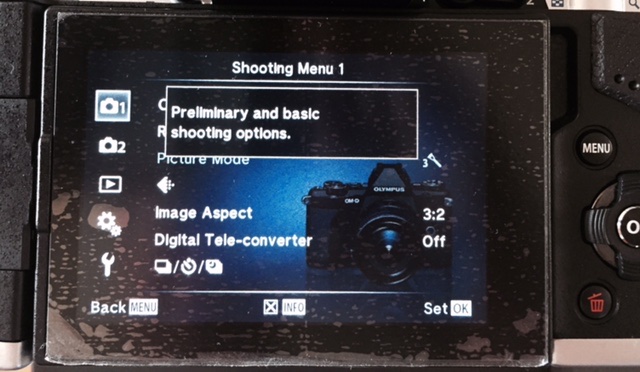
Drill down to one of the main menu choices and it gets worse:
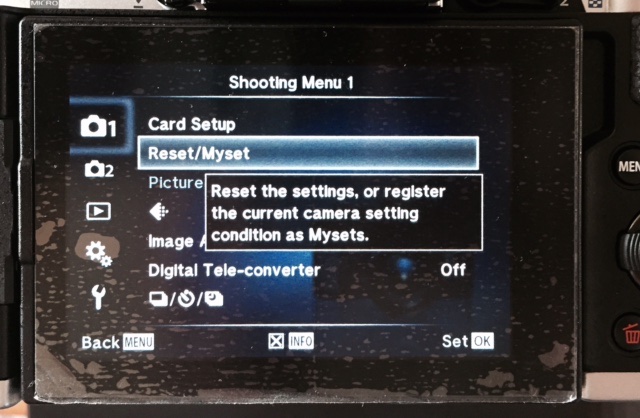
Where the user simply wants to scan the choices he can no longer do so and I can find no way of turning the intrusive overlay off. As a result I have to scroll through the choices each time being interrupted by this pop-up overlay. After a minute of this nonsense I am torn between the Excedrin bottle and hurling the camera against the nearest wall. Why has not a single ‘reviewer’ made mention of this? It’s different when you pay for your own gear, I guess.
It gets worse. Far worse.
Yesterday I took the Oly out for a quick shakedown having spent a solid hour configuring the camera to my shooting preferences and two hours before that reading the manual. Arriving at my destination I found that the two upper right dials, carefully programmed for aperture selection and exposure compensation had mysteriously switched to White Balance choices and ISO selection. This immediately rendered the camera useless and it took me a solid 30 minutes with the instruction manual (some misnomer – who wrote the index for this wretched creation?) on my iPad to figure it out. In the event the manual proved utterly useless and I had to resort to trial and error. By the time I had it figured out the sun had set and my photo opportunity was gone. Nice start, Olympus.
Needless to add, the manual is only available by download or on the CD provided. There’s a printed Quick Start booklet of no use to the intended purchaser of this hardware. Given that Olympus has spent a small fortune on the boxing of the body – a box you will see twice in your life, first on purchase then on sale, any rational photographer would opt for a cheap brown paper box and a proper printed manual. But no, that would be catering to the real world user.
This morning I had another go and again the settings had mysteriously changed. Where I had left the camera overnight set to single shot RAW I was getting three image HDR. Worse, there’s a purportedly simplified menu choice overview accessed by pushing the OK button on the rear and this mess looks like this – can you believe this?
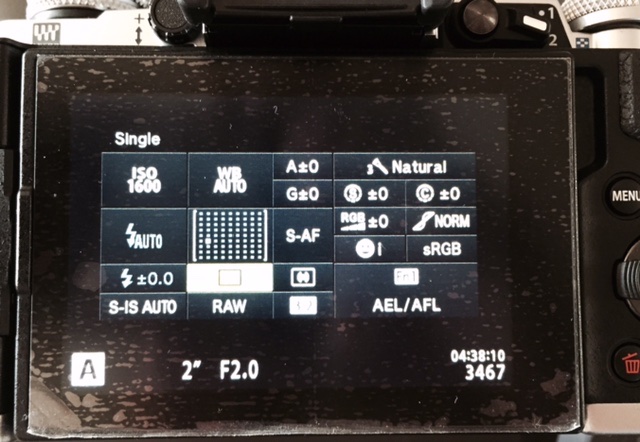
Now you are meant to be able to scroll to one of these cells with one of the top right wheels and change the setting with the other, but while scrolling works, selection does not. So it’s back to the execrable excrescence to try and find the right choice there, subjected again to the obstruction and ceaseless flashing of the pop-ups.
Doubtless the magical menu choice changes result from accidental button presses by me, but if there’s no way of disabling all those buttons then I see no way this will not recur, once again rendering the camera useless barring a prolonged session with the menus and the aspirin.
I have not encountered a more poorly, cynically designed, inept and uncaring menu system in any of the dozens of digital cameras I have used and frankly, at my age, my time is simply too valuable to waste it on this sort of nonsense. Olympus either needs to recess these buttons or make a toggle in firmware to disable them once set – otherwise their users will develop suicidal tendencies after having to dive into the menu system yet again.
Of the few snaps I managed to squeeze off, most were in RAW and LR5.7 has yet to be updated to recognize the camera’s RAW files so you have to go through the tortuous process of installing Olympus Viewer 3 software from the provided CD (good luck if you have no CD reader in your Mac Book Air) and then, of course, it’s outdated and needs an upgrade. The downloader then proceeds to download everything in triplicate confirming that the same fellow who designed the camera’s menu system also worked on the processing software.
You now try to Export the file as a 16-bit TIFF and get:
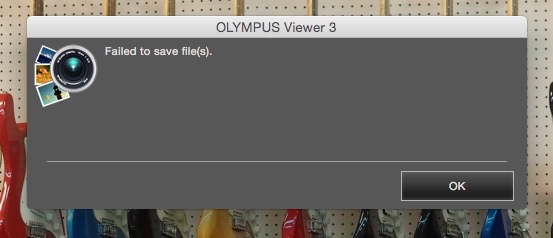
But of course. By now I expected no less. So you restart the Olympus app and this time it works, coming over as an 85mb TIFF file ready for import to LR. The RAW original is 14.6MB – another good reason to use RAW (this is a common rate of file bloat, not specific to Olympus).
This sheer hell does not stop there. For some reason Olympus Viewer puts a reduced yellow frame around the image and what you export is the reduced section.
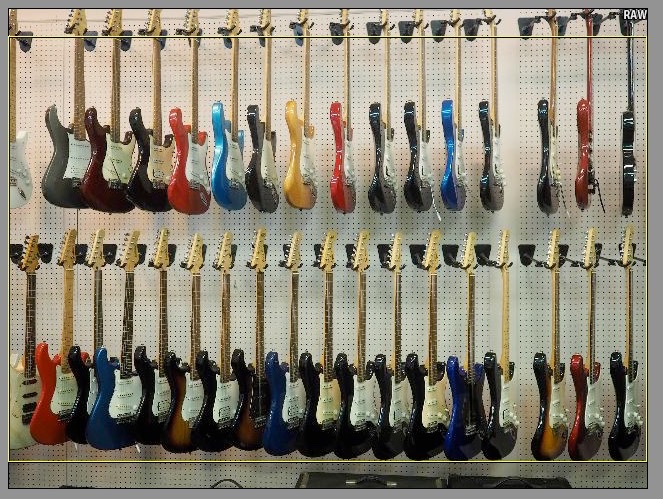
For the life of me I cannot find an option to export what I actually photographed. Here’s the exported version:

In the pawn shop. OM-D E-M5/II, 17mm Zuiko, fluorescent lighting, so the mechanical shutter was used.
Which just about does it for me. This piece of garbage goes back to B&H ASAP, (who were very nice about it, I must say), before I lose any more heart cycles trying to figure it out. The tipping point for my decision was the realization that the plethora of buttons could not be disabled (nor can those on the GX7 but they are disposed/designed/recessed so as not to be constantly triggered accidentally, suggesting someone at Panasonic actually takes pictures, not something you could accuse the Olympus designers of doing). As I am stuck with the hands and fingers passed to me by my parents I see no fix for this intractable problem.
This has been the single worst camera experience I have ever had and I urge you to avoid this poorly designed piece of hardware and buy two GX7s instead if MFT is your thing. Or, as a minimum, either rent it first or buy with return privileges, in case your experience mirrors mine.
For what it’s worth, the RAW results – well, cropped RAW->TIFF exports – show the performance of the 16mp sensor in the E-M5/II to be identical to that in the GX7 so if you think you are getting a better, newer sensor in the Olympus, you are mistaken..